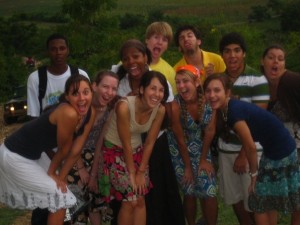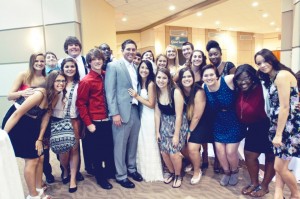Before I start, I’d like to give a quick shout out to the Campus Clipper. The Campus Clipper has been offering awesome student discounts in NYC, from the Upper East Side to Greenwich Village. The company helps support students in so many ways, from their coupon booklet to their Official Student Guide. Now, on to the blog!
Nothing beats experience. It’s incredibly important to get as much time as possible in front of a crowd. Unless you’re the reincarnation of Bob Hope, then you’re going to bomb the first few times you get on stage. We all do. It’s just one of those obstacles that you have to overcome; but don’t worry, it always gets better.
When you start out, you’re nervous, doubtful, and go up there and totally bomb – fumbling over your words, forgetting punch lines – but each time you do it’s a learning experience that will help you progress to the next level.
In comedy, you have to have thick skin and roll with the punches. The best way to toughen up your emotionally fragile skin is to endure several cold audiences (most open mic crowds). Few situations make my lip quiver and face turn red like a stale room while I’m telling jokes. Blank stares, silence, and the sound of your heart beat. I hate performing for a cold crowd – I’m up there baring my soul and sometimes the best reaction I get is a lady sneezing.
One of my worst bombs was my second time ever performing stand up. A comedian I had befriended, Steve Brown, offered me a 5 minute opener spot at one of his shows at the Nashville club “Jazz ‘n Jokes.” I was the only white person there and felt extremely intimidated because I was most certainly not the person whom the audience paid good money to come see. I hadn’t rehearsed and my delivery of jokes seemed like I was trying to tell everyone about a dream I could barely remember.
The result: blank stares and a few pity laughs. Lesson learned: always be prepared! Any reaction is better than no reaction though, because you’re trying to create a dialogue with your audience and get a response from them. If you can start off with a strong opener and get a laugh in the beginning, then the rest of your set will run more smoothly – you broke the ice and they trust you. To gain the trust of the audience, I use self-deprecating humor to humble myself and let them know that I’m confident as well as comfortable talking to them.
There’s hope from these grueling moments though, because you’ll find that you continue to grow more and more jaded to a cold crowd. The less you allow cold audiences to affect you, the more you rely on yourself and the less you rely on their validation. Plus, each time you bomb, you become more aware of what areas in your routine need improving. Also, you know that the next time can’t possibly be any worse!
My best advice to avoid letting a cold crowd affect your stand up, is to fully immerse yourself into your monologue and become so consumed by your jokes that nothing can damage your mojo. I’ve found that when I’m fully consumed by my monologue, I believe in myself more. You’ve got to sell yourself on your act. If you can’t sell yourself on your own jokes, then you can’t expect anyone else to buy them.
There’s no shortcut to gaining confidence on stage and becoming famous. Everyone I’ve talked with has told me the same thing: get up on stage as often as possible.
A few words from the Campus Clipper –
The Campus Clipper not only helps our interns learn new skills, make money, and create these amazing E-Books, but we give them a platform to teach others. Follow each new blog post to read a chapter of our various books and to learn how the Campus Clipper can help you follow your dreams!
Craving student savings while you catch up on your reading? Click on the link to download the Official Campus Clipper Coupon Booklet to check out some awesome college discounts! And check out our newest YouTube video showing off some of New York City’s finest students during this year’s Welcome Week!

















